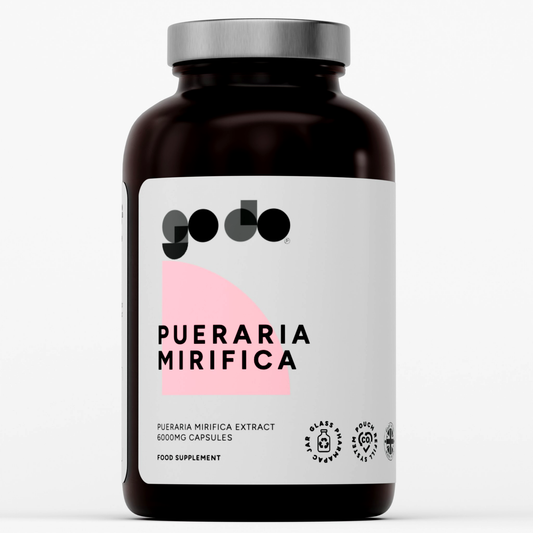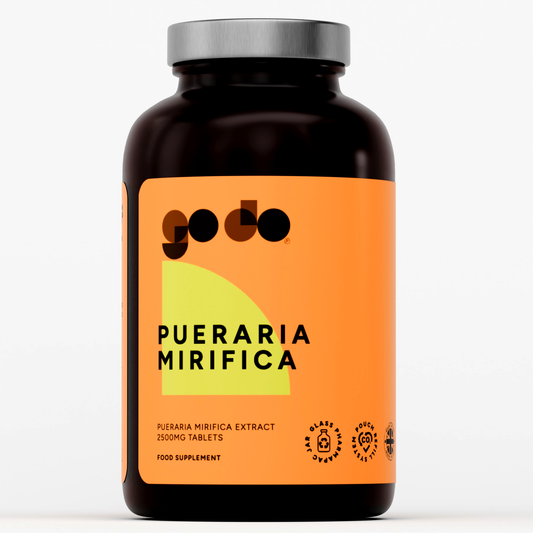Omega-3 fatty acids rank among the most extensively researched nutrients, with thousands of studies demonstrating their crucial role in cardiovascular health, brain function, inflammation control, and overall wellness. Understanding the different types of omega-3s and their various sources can help you make informed decisions about incorporating these essential fats into your health regimen.
Understanding the Three Key Omega-3 Types
Not all omega-3 fatty acids are created equal. The three main types each offer distinct benefits and come from different sources, making it important to understand their unique characteristics and roles in human health.
EPA (eicosapentaenoic acid) is primarily found in marine sources and serves as a powerful anti-inflammatory compound. EPA is particularly effective for cardiovascular health, mood support, and reducing systemic inflammation. Research consistently shows EPA's benefits for depression, anxiety, and inflammatory conditions like rheumatoid arthritis.
DHA (docosahexaenoic acid) is the most abundant omega-3 in the brain and retina, making it crucial for cognitive function, memory, and eye health. DHA is especially important during pregnancy and early childhood for proper brain and eye development, but remains essential throughout life for maintaining cognitive function and preventing age-related mental decline.
ALA (alpha-linolenic acid) comes from plant sources and serves as a precursor to EPA and DHA. However, the conversion rate is quite low in humans, with only about 1-10% of ALA converting to EPA and even less to DHA. This makes ALA a less efficient source of omega-3s compared to direct EPA and DHA consumption.
Fish Oil: The Traditional Gold Standard
Fish oil remains the most popular and well-researched source of omega-3 fatty acids, providing both EPA and DHA in readily absorbable forms. The quality and effectiveness of fish oil supplements can vary dramatically, making careful selection crucial.
Wild-caught fish generally provide higher omega-3 content than farmed fish, as their natural diet includes omega-3-rich algae and smaller fish. Cold-water fish like salmon, mackerel, sardines, and anchovies typically contain the highest concentrations of omega-3s due to their natural habitat and diet.
Molecular distillation is a purification process that removes contaminants like heavy metals, PCBs, and dioxins from fish oil while concentrating the omega-3 content. Look for fish oils that specify molecular distillation or similar purification methods to ensure safety and potency.
Third-party testing by organizations like IFOS (International Fish Oil Standards) provides additional quality assurance. These independent tests verify omega-3 content, purity levels, and absence of contaminants, giving consumers confidence in product quality.
The triglyceride form of fish oil is generally better absorbed than ethyl ester forms, though both can be effective. Some manufacturers re-esterify their fish oil back to triglyceride form after purification to improve bioavailability.

Krill Oil: The Phospholipid Advantage
Krill oil has gained popularity as an alternative to traditional fish oil, offering some unique advantages due to its different molecular structure. Krill are tiny crustaceans that serve as a food source for whales, seals, and many fish species.
The omega-3s in krill oil are bound to phospholipids rather than triglycerides, which may enhance absorption and bioavailability. Some studies suggest that smaller doses of krill oil can achieve similar blood omega-3 levels compared to larger doses of fish oil, though more research is needed to confirm this advantage consistently.
Krill oil naturally contains astaxanthin, a powerful antioxidant that gives krill their reddish color. Astaxanthin helps protect the omega-3s from oxidation and may provide additional health benefits including eye health support and anti-inflammatory effects.
Environmental sustainability is often cited as an advantage of krill oil, as krill populations are carefully monitored and harvesting is regulated by international agreements. However, krill oil supplements are typically more expensive per dose of omega-3s compared to high-quality fish oil.
The smaller capsule size of krill oil supplements appeals to some people who have difficulty swallowing large fish oil capsules. Additionally, some users report less fishy aftertaste or burping with krill oil compared to fish oil.

Algae Oil: The Plant-Based Powerhouse
Algae oil represents the original source of omega-3s in the marine food chain, as fish obtain their omega-3s by consuming algae or algae-eating organisms. This makes algae oil an excellent option for vegetarians, vegans, and people with fish allergies.
Cultivated algae oil can provide both EPA and DHA in controlled ratios, with some products offering high DHA content specifically. The cultivation process allows for precise control over purity and omega-3 concentration without concerns about ocean contaminants.
Environmental impact is generally lower for algae oil compared to fish oil, as algae cultivation doesn't deplete wild fish stocks or disrupt marine ecosystems. The controlled growing conditions also eliminate concerns about mercury, PCBs, and other ocean pollutants.
Algae oil supplements are often more expensive than fish oil, but prices have decreased as production has scaled up. The technology continues to improve, with newer algae strains producing higher omega-3 concentrations and better cost-effectiveness.
Some algae oils are specifically engineered to provide optimal EPA to DHA ratios for particular health applications. For example, some formulations emphasize DHA for brain health, while others provide more balanced EPA and DHA ratios.

Whole Fish: The Complete Package
Consuming whole fish provides omega-3s along with high-quality protein, vitamin D, selenium, and other nutrients that may work synergistically with omega-3s. This whole-food approach offers benefits that isolated supplements may not fully replicate.
Fatty fish like salmon, mackerel, sardines, and herring provide the highest omega-3 content. A 3.5-ounce serving of salmon can provide 1.5-2 grams of omega-3s, while the same amount of sardines might provide 1-1.5 grams.
Preparation methods can affect omega-3 content, with grilling, baking, and steaming generally preserving more omega-3s compared to frying. Overcooking can reduce omega-3 content and may create harmful compounds.
Mercury content varies significantly between fish species. Smaller fish like sardines and anchovies generally have lower mercury levels compared to larger predatory fish like tuna and swordfish. This makes smaller fish excellent choices for regular consumption.
Fresh versus frozen fish can both be excellent omega-3 sources, with frozen fish sometimes having better omega-3 preservation if properly handled. Canned fish like salmon and sardines provide convenient, shelf-stable omega-3 sources.
Plant-Based ALA Sources
While ALA conversion to EPA and DHA is limited, plant-based omega-3 sources can still contribute to overall omega-3 status and provide other health benefits. These sources are particularly important for vegetarians and vegans.
Flaxseeds and flaxseed oil are among the richest sources of ALA, with one tablespoon of ground flaxseeds providing about 1.6 grams of ALA. Grinding flaxseeds improves absorption compared to whole seeds, which may pass through the digestive system intact.
Chia seeds provide ALA along with fiber, protein, and minerals. Two tablespoons of chia seeds contain approximately 5 grams of ALA. Chia seeds can be easily incorporated into smoothies, yogurt, or used as an egg substitute in baking.
Walnuts are an excellent whole-food source of ALA, with one ounce providing about 2.5 grams. Walnuts also provide protein, healthy monounsaturated fats, and various micronutrients that support overall health.
Hemp seeds offer ALA along with complete protein and gamma-linolenic acid (GLA), another beneficial fatty acid. Hemp seeds have a mild, nutty flavor that works well in various dishes.
Canola oil, when cold-pressed and unrefined, provides a good cooking oil source of ALA. However, processing methods can significantly affect ALA content and overall oil quality.
Factors Affecting Absorption and Effectiveness
The absorption and effectiveness of omega-3 supplements can be influenced by various factors, making timing and combination with other nutrients important considerations.
Taking omega-3 supplements with meals, particularly those containing fat, significantly improves absorption. The presence of dietary fat stimulates bile release, which is necessary for optimal fat-soluble nutrient absorption.
The ratio of omega-6 to omega-3 fatty acids in your diet affects omega-3 effectiveness. Most Western diets provide excessive omega-6 fatty acids from vegetable oils, which can interfere with omega-3 utilization. Reducing omega-6 intake while increasing omega-3s optimizes the balance.
Individual genetic variations affect omega-3 metabolism and requirements. Some people have genetic polymorphisms that reduce their ability to convert ALA to EPA and DHA, making direct EPA and DHA sources more important for these individuals.
Age can affect omega-3 absorption and metabolism, with older adults potentially requiring higher doses to achieve optimal blood levels. Digestive health also plays a role, as conditions affecting fat absorption can reduce omega-3 uptake.
Storage and handling affect omega-3 quality, as these fatty acids are susceptible to oxidation. Proper storage in cool, dark conditions and checking expiration dates helps maintain potency and prevents rancidity.

Quality Indicators and Testing
Identifying high-quality omega-3 sources requires understanding key quality indicators and testing standards that ensure purity, potency, and freshness.
Oxidation levels measured by peroxide value, anisidine value, and TOTOX (total oxidation) scores indicate freshness and quality. Lower values indicate fresher, higher-quality oils. Reputable manufacturers provide these test results.
Heavy metal testing for mercury, lead, cadmium, and arsenic is crucial for marine-derived omega-3 sources. Third-party testing results should show levels well below established safety limits.
PCB and dioxin testing ensures that industrial contaminants have been effectively removed during processing. These persistent organic pollutants can accumulate in marine organisms and should be minimized in supplements.
Omega-3 concentration and accurate labeling ensure you're getting the EPA and DHA amounts listed on the product label. Some products may list total fish oil rather than actual omega-3 content, which can be misleading.
Certificate of analysis documents from manufacturers provide detailed information about testing results, including purity, potency, and contamination levels. Reputable companies make these documents available to consumers.
Dosage Considerations and Therapeutic Ranges
Omega-3 dosage requirements vary based on individual health status, dietary intake, and specific health goals. Understanding appropriate dosing helps optimize benefits while avoiding potential side effects.
General health maintenance typically requires 250-500mg of combined EPA and DHA daily, which can often be achieved through regular fish consumption or modest supplementation.
Therapeutic doses for specific conditions may range from 1-4 grams of combined EPA and DHA daily. Higher doses should be used under healthcare provider guidance, particularly for people taking medications or with underlying health conditions.
EPA-to-DHA ratios may be optimized for specific purposes. Higher EPA ratios (2:1 or 3:1 EPA to DHA) may be beneficial for mood and inflammatory conditions, while higher DHA ratios may be preferred for cognitive health and brain development.
Timing of doses can affect absorption and minimize side effects. Splitting larger doses throughout the day with meals may improve tolerance and absorption compared to taking large single doses.
Individual response varies significantly, with some people achieving benefits at lower doses while others require higher amounts. Blood testing for omega-3 levels can help optimize individual dosing.
Sustainability and Environmental Considerations
The environmental impact of omega-3 sources varies significantly, making sustainability an important factor for environmentally conscious consumers.
Wild fish stocks face pressure from overfishing, climate change, and pollution. Choosing omega-3 sources from sustainably managed fisheries helps protect marine ecosystems for future generations.
Farmed fish sustainability depends on farming practices, feed sources, and environmental management. Some aquaculture operations are more sustainable than others, with ongoing improvements in industry practices.
Algae cultivation generally has a lower environmental footprint compared to fishing or fish farming, as it doesn't require ocean resources and can be produced in controlled environments with minimal environmental impact.
Smaller fish like sardines and anchovies are generally more sustainable choices than larger predatory fish, as they reproduce faster and require less time to reach maturity.
Certification programs like MSC (Marine Stewardship Council) for wild fish and ASC (Aquaculture Stewardship Council) for farmed fish help consumers identify more sustainable options.
Special Populations and Considerations
Certain populations have specific omega-3 needs that may influence the choice of source and dosing requirements.
Pregnant and breastfeeding women need adequate DHA for fetal and infant brain development. Algae oil or carefully sourced fish oil provides DHA without mercury concerns. The FDA recommends 200-300mg of DHA daily during pregnancy and breastfeeding.
Children require omega-3s for proper brain and eye development, but dosing should be adjusted for body weight. Algae oil or high-quality fish oil designed for children provides appropriate options.
Older adults may benefit from higher omega-3 intake to support cognitive function and reduce inflammation. Age-related changes in absorption may require higher doses to achieve optimal blood levels.
People with fish allergies can safely use algae oil or plant-based ALA sources. However, they should be particularly careful to ensure adequate EPA and DHA intake through algae-derived supplements.
Individuals taking blood-thinning medications should consult healthcare providers before using omega-3 supplements, as these fatty acids have mild anticoagulant effects that could interact with medications.

Future Developments and Emerging Sources
The omega-3 industry continues to evolve with new sources, extraction methods, and delivery systems that may offer improved benefits or sustainability.
Enhanced bioavailability formulations using phospholipids, emulsification, or specialized delivery systems may improve absorption and reduce required doses.
Novel algae strains are being developed to produce higher omega-3 concentrations and new combinations of EPA and DHA ratios tailored for specific health applications.
Fermentation-based production of omega-3s using genetically modified organisms represents a potential future source that could provide cost-effective, sustainable omega-3 production.
Personalized omega-3 recommendations based on genetic testing may become more common, allowing for individualized dosing and source selection based on personal metabolic factors.
The optimal source of omega-3 fatty acids depends on individual factors including dietary preferences, health status, environmental concerns, and budget considerations. Fish oil remains the most researched and cost-effective option for most people, while algae oil provides an excellent plant-based alternative. Whole fish consumption offers the benefit of obtaining omega-3s along with other beneficial nutrients in a complete food matrix. Regardless of source, choosing high-quality, properly tested products and maintaining consistent intake provides the foundation for obtaining optimal omega-3 benefits.












